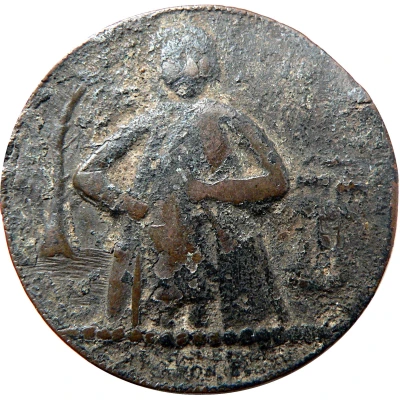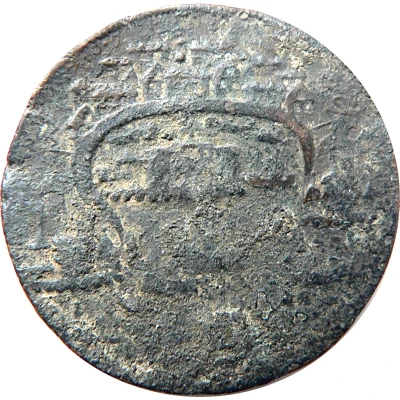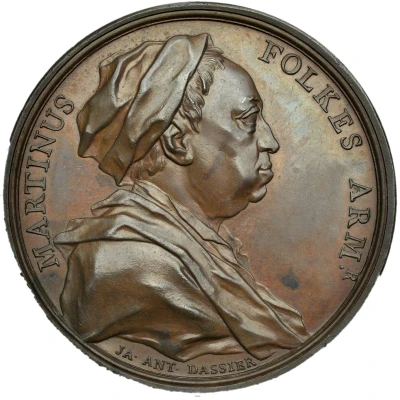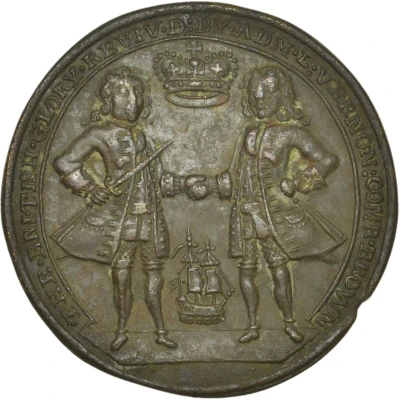


Medal - Admiral Vernon Fort Chagre ND
1740 year| Brass | 13.8 g | 39 mm |
| Location | United Kingdom (United Kingdom, British Overseas Territories and Crown Dependencies) |
|---|---|
| Type | Commemorative medals › Military medals |
| Year | 1740 |
| Composition | Brass |
| Weight | 13.8 g |
| Diameter | 39 mm |
| Thickness | 1 mm |
| Shape | Round |
| Orientation | Medal alignment ↑↑ |
| Demonetized | Yes |
| Updated | 2024-11-14 |
| Numista | N#140456 |
|---|---|
| Rarity index | 97% |
Reverse
In centre is the attack on Portobello. The six ships are lined up two in the top/left row and four in the bottom/right row, those below in a curve along the bottom edge. All ships are sailing to the right. There are four small vessels in the harbour
Lettering: PORTO BELLO · TAKEN BY ADMIRAL VERNON · WITH SIX MEN OF WAR ONLY · NOV · 22 · AN DOM · 1739 ·
Edge
Plain
Comment
Catalog Numbers: MI 547/153, MI ii 548/154, Milford Haven 1919 - 283
The MI catalogue is Medallic Illustrations, with a second issue referenced as Medallic Illustrations ii
A better image of both sides ...
The metal Pinchbeck is an alloy of copper and zinc resembling gold, used in watchmaking and cheap jewellery.
This commemorates the destruction of the fortress of San Lorenzo el Real Chagres [West Indies], under the command of Vice Admiral Edward Vernon, during the War of Jenkins' Ear, part of the War of the Austrian Succession.
After successfully capturing and destroying Portobello [Panama] in November 1739, Vernon was determined to eliminate the last Spanish stronghold in the area, a town and fort at the entrance to the Chagres River, just west of Colon. At 3pm on March 22 1740, an English squadron composed of the ships Norwich, Stafford, Falmouth, and Princess Louisa, along with bomb vessels, fireships, and transports, began bombarding the fort. The bombing continued until 11am on March 24 when Spanish Captain Cevallos finally surrendered by hanging a flag of truce on top of the fort.
After securing the fort, the British sent men to take possession of the custom-house on the opposite side of the river. The following day, Vice Admiral Vernon entered the custom-house and ordered his men to remove all goods, comprising of around 4,300 bags of Guayaquil cocoa, Jesuit bark, Spanish wool, and other supplies, and load them on to a ship to be sent back to England. Vernon then ordered for everything to be destroyed, including two Spanish sloops in the Chagres River, the custom-house, and the fort.
A further better condition example:
This medal celebrated Admiral Edward Vernon overtaking Porto Bello, a vital Spanish port in Panama. Vernon overtook the harbour with six ships, as he had boasted to Parliament. The English celebrated the victory with many similarly-designed medals. The obverse depicts half-length image of Vernon facing forwards, his baton in his left hand. Behind him are a ship and a fort at his right, and a tree on his left. Around the image states: “Vice Admiral of the Blew & Commander in Chief of all his Mai ships in the West Indies”. In exergue: “The Honorable Edward Vernon, Esq.” In the right field is written: “A view of Fort Chagre”.
The reverse depicts six ships all sailing right as they sail into the harbour towards four smaller boats. The harbour is depicted at the top of the medal with the buildings pointing towards the legend. The legend states: “Porto Bello Taken By Admiral Vernon with six men of war only. Nov. 22 Anno Dom 1739.”
While dated 1739, this medal was struck later.
The obverse and reverse text read as follows: Vice Ad : rl: of the Blew: & Com : er In Chief of All his Mai : Ships In the West Indies; The Hon Edward Vernon Esq.; A View of Fort Chagre | and | Porto Bello. Taken by Admiral Vernon. With Six Men of War Only. Nov. 22 Anno Dom. 1739.



